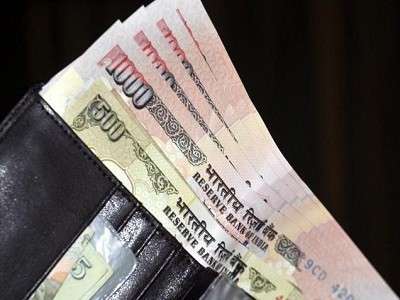Currency Demonetisation in India: Things you need to know

Exchange of demonetised notes reduced to Rs. 2,000 from Rs 4,500, SBI ATMs at petrol pumps to dispense cash soon.
By Snehal Naik 18th Nov, 2016 | 03:15 pm
ShareNarendra Modi, Prime Minister, India, announced the demonetisation of Rs 500 and Rs 1,000 notes in circulation on 08 November 2016. After the initial excitement and hope that this is one of the best ways to curb black money in the country, many have been left in the lurch due to lack of or excess of information. This information is coming in all forms on the Internet and on our mobile devices. It seems as if an anonymous group is working 24x7 to enlighten the nation on the dos and don’ts during this period of financial crunch.
What is demonetisation?
Demonetisation is making a particular form of currency invalid. When the government demonetises a currency, it loses it legal status as money and becomes an ordinary piece of paper. In other words, Rs 500 and Rs 1,000 are not legal currencies anymore.
Why did the Government demonetise Rs 500 and Rs 1,000 notes?
The government demonetised Rs 500 and Rs 1,000 notes to reduce the amount of cash available in the system which in turn, is expected to restrain the control of black money.
Do you know this is not the first time currency has been demonetised in India?
Demonetisation was first implemented by the Reserve Bank of India in 1946 when it banned the then circulated Rs 1,000 and Rs 10,000 notes. The government then introduced higher denomination banknotes in Rs 1000, Rs 5000 and Rs 10000 eight years later in 1954. However, the Morarji Desai Government demonetised these notes in 1978.
What do I do with the Rs 500 and Rs 1,000 notes I have with me?
Notes of Rs 500 and Rs 1,000 can be deposited in bank and post office accounts till 30 December 2016.
How to deposit the old notes that we have?
Carry your ID Proof in order to deposit the old notes that you have. Remember, as per the RBI guidelines, you need to ONLY SHOW the valid proof of your identity and not submit photocopies. The bank only needs details and numbers on the requisition slip which the teller will match with entries in a document.
How much money can you deposit at a time?
There is no limit to how much money you wish to deposit at a time, but you will get only Rs 4000 in exchange per person. However, if the your KYC process at your bank is incomplete, the maximum the maximum value of specified bank notes that you can deposit is Rs 50,000.
What is the limit on the over-the-counter exchange of Rs 500 and Rs 1,000 notes?
You can get a maximum of Rs 2000 exchanged at a time with a requisition slip in the format specified by the Reserve Bank and proof of identity. The limit of Rs 2000 is once per person, once against one account. This limit would be applicable only for exchange and not withdrawal of old series notes till December 30.
What about the other notes/coins that I have with me?
Notes of Rs 100, Rs 50, Rs 20, Rs 10, Rs 5, Rs 2 and Re 1 and all coins are continued to be valid.
But wasn’t using Rs 500 and Rs 1,000 notes easier than having lower denomination currency?
The government has introduced new notes of Rs 2,000 and Rs 500 and these will soon be in circulation. Moreover, there is no change in any other form of currency exchange be it cheque, DD, payment via credit or debit cards etc.
Can I withdraw cash from the banks as the ATMs are out of cash or being recalibrated?
You can withdraw Rs 10,000 in a day against withdrawal slip or cheque and Rs 20,000/- in a week (including withdrawals from ATMs) up to 24 November 2016.
Can I withdraw money from ATMs at petrol pumps?
You can now drive into a petrol pump that has card swipe machines from SBI to draw cash. Swipe your debit card at petrol stations run by state-run oil companies and you will get Rs 2,000. The facility will be extended to 20,000 outlets that have card swipe machines from HDFC Bank, Citibank and ICICI Bank.
How to manage expenses like a wedding in the family?
Since it is the wedding season, one member of the family, be it father or mother or those getting married can withdraw up to Rs 2.5 lakh for one account. Detailed operational guidelines are available with the banks.
How do farmers ensure sowing in Rabi season despite the demontisation?
Farmers can withdraw Rs 25,000 per week against crop loan/kissan credit card. Traders in agricultural mandis can withdraw Rs. 50,000 in cash per week. The time limit for payment of crop loan insurance premium has been extended by 15 days
Advance withdrawal for Central Government Employees
Central Government employees up to group C can draw their salary in advance up to Rs 10,000 in cash. The amount will be adjusted against their November salaries.
The nation has been more or less patient despite the inconvenience caused by the sudden demonetisation move. However, some baseless rumours are spreading panic among citizens and leading to life-threatening situations for the uneducated, ignorant class of people. The only solution to this problem is not believing in rumours and sharing information that is validated only by authorities.
Important Resources
- Education Franchisee opportunity
- NCERT Solution
- CBSE Class 9 Mathematics
- NCERT Solutions for class 10 Science
- Sample Papers
- CBSE Class 9 Science
- NCERT Solutions for class 10 Maths
- Revision Notes
- CBSE Class 10 Hindi
- CBSE Class 10 English
- CBSE Class 10 English
- CBSE Class 10 Social Studies
- CBSE Class 10 Science
- CBSE Class 10 Mathematics
- Career In Science After 10
- Career In Commerce After 10
- Career In Humanities/Arts After 10
- NCERT Solutions for Class 10
- NCERT Solutions for Class 11
- Business Studies Class 12 CBSE project





